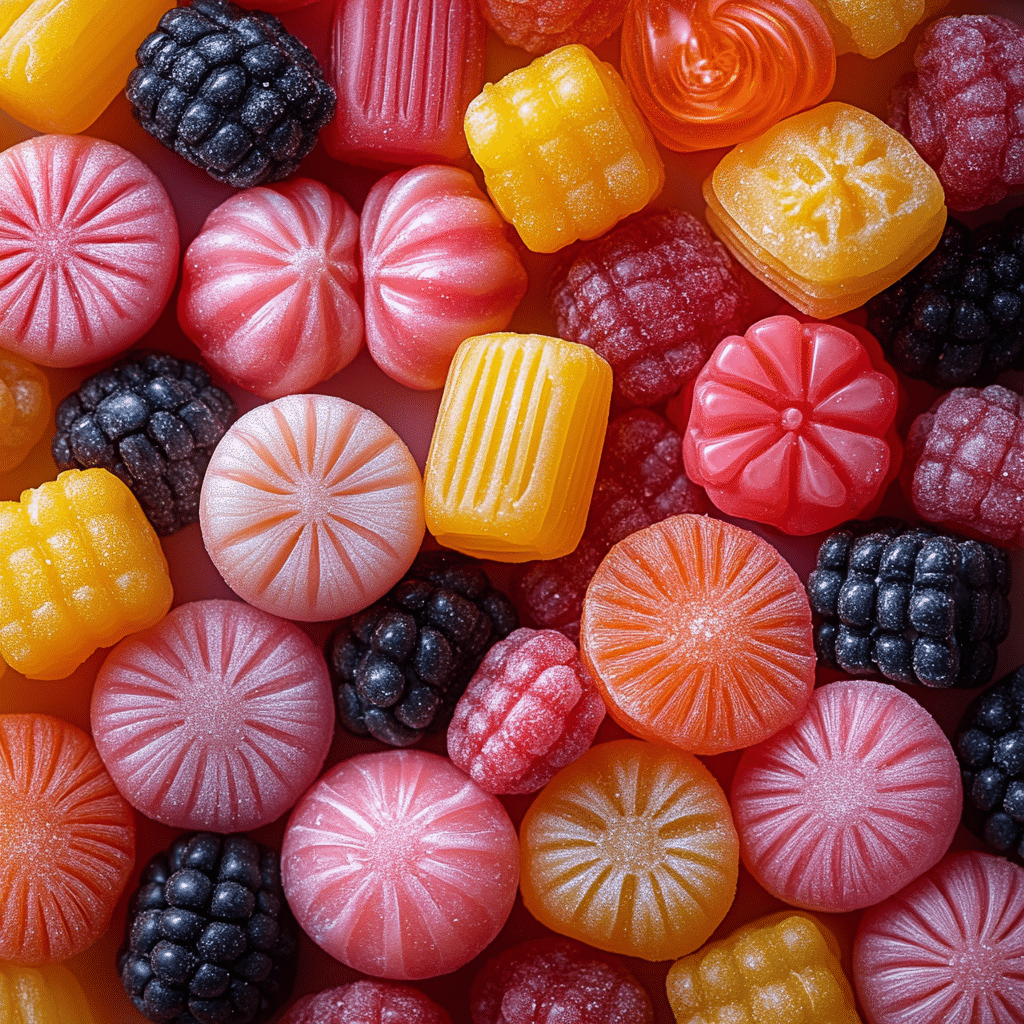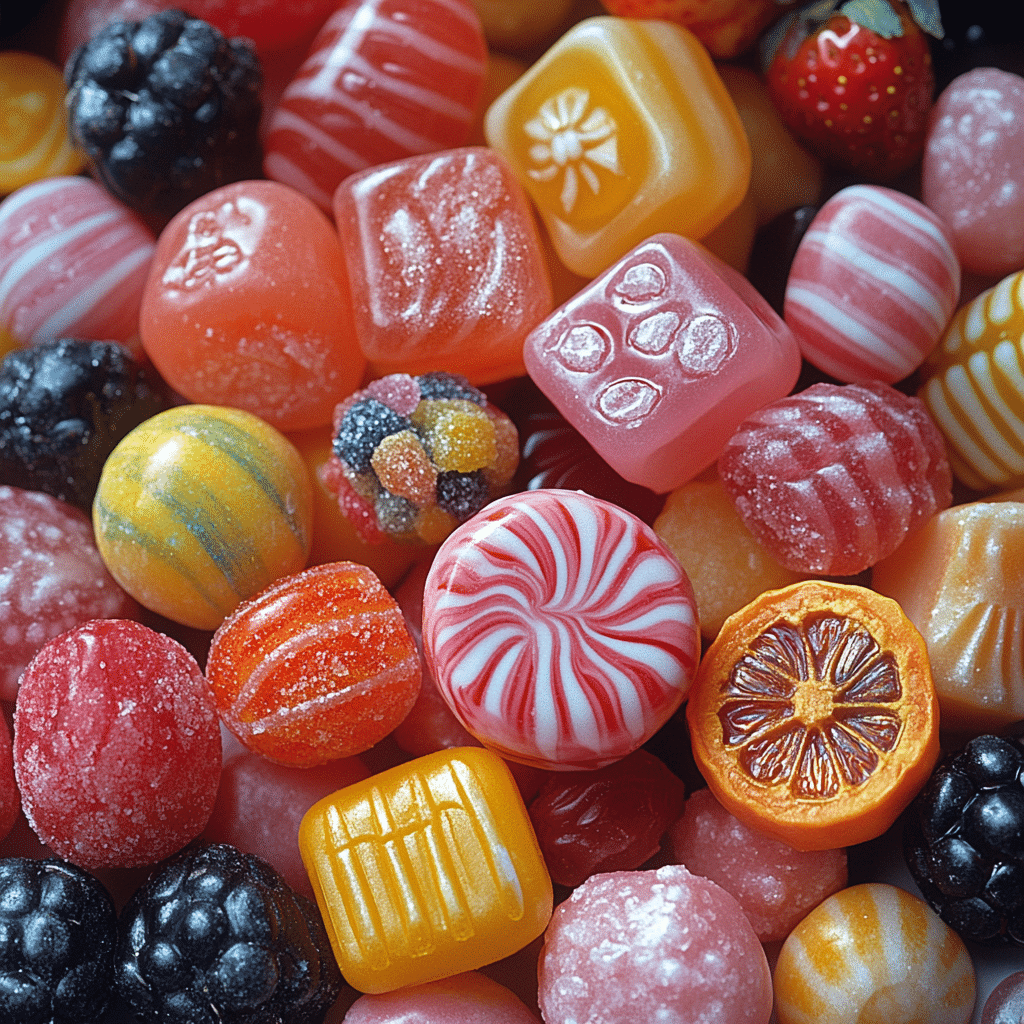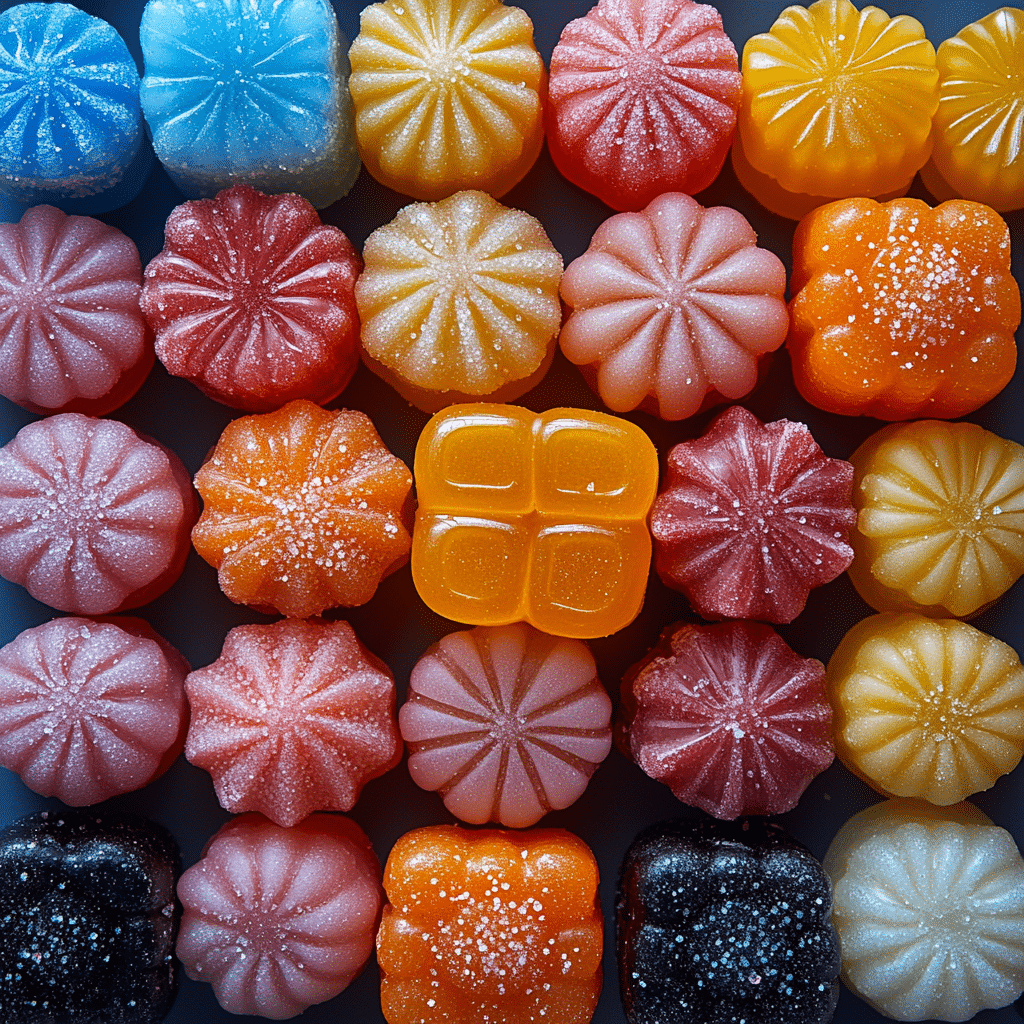The Iconic Legacy of Polkagris: A Swedish Candy Staple
Swedish candy has captured the hearts of many, with one particularly iconic treat standing out: Polkagris. This traditional Swedish stick candy, invented in 1859 by Amalia Eriksson in Gränna, encapsulates the charm of Swedish confectionery craftsmanship. Eriksson, a young widow, devised the peppermint-flavored hard candy to support herself after her husband’s death. The unique candy, with its striking red and white stripes twisted by hand, soon became popular at fairs and Christmas markets.
Today, Polkagris is celebrated annually at the Polka Festival in Gränna, attracting visitors who delight in its making and savoring. Handcrafting a Polkagris involves stretching and twisting the candy dough, resulting in a visual and taste marvel. Visitors can even try their hand at making Polkagris during workshops, gaining a deeper appreciation for this beloved sweet.
Beyond Polkagris: Exploring Other Treasured Swedish Sweets
While Polkagris holds a special place in Swedish candy history, the country’s confectionary scene is richly diverse. Here are some other cherished Swedish sweets:

| Candy Name | Description | Notable Features & Flavors | Associated Brands | Availability & Pricing |
|---|---|---|---|---|
| Polkagris | Traditional Swedish stick candy invented in 1859 by Amalia Eriksson in Gränna. | Peppermint flavor; often sold at fairs and Christmas markets. Also available in various flavors nowadays. | N/A | Widely available in Sweden; priced around $2-$5 per stick. |
| Marabou Chocolate | Popular Swedish chocolate brand offering a wide range of chocolate bars. | Known for creamy texture; flavors include milk chocolate, Daim, Oreo, and more. | Marabou | Available in Sweden and internationally; $2-$7 per bar. |
| BUBS | Swedish candy company offering gummies and licorice with unique flavors and vegan options. | Varieties such as Skull-shaped gummies; flavors include raspberry, cola, and licorice. | BUBS | Available in Sweden and select international markets; $1-$5 per bag. |
| Malaco | Renowned for its wide range of licorice and gummy candies in Sweden. | Includes classics like Swedish Fish and mixed gummies; available in sweet and salty flavors. | Malaco | Widely available in Sweden; $2-$6 per bag. |
| Ahlgrens Bilar | Iconic, car-shaped candies that are immensely popular in Sweden. | Soft and chewy texture; available in original flavor (similar to marshmallow), as well as other fruit flavors. | Ahlgrens | Widely available in Sweden and in some international stores; $1-$4 per bag. |
Swedish Fish: The Internationally Loved Swedish Candy
Of course, we can’t talk about Swedish candy without mentioning Swedish Fish. Initially produced by Malaco in the late 1950s, these chewy, fish-shaped candies have become internationally beloved. Many might be surprised by the lingonberry-like flavor that distinguishes Swedish Fish from other berry-flavored candies. This unique taste, combined with the iconic fish shape and signature texture, has made the candy a hit across various cultures.
Swedish Fish’s popularity extends beyond Sweden’s borders. In places like the U.S., the candy has become a staple in many homes, enjoyed by children and adults alike. Despite regional adaptations, the essence of Swedish Fish remains intact—chewy, flavorful, and fun to eat.
Sweet Science: Why Swedish Candy Stands Out
Swedish candy is a cut above, thanks to quality and variety. A testament to this is the tradition of ‘Lördagsgodis’ or Saturday candy, where families indulge in sweets together weekly. This custom underscores the joy and significance of candy in Swedish culture. Swedish candies are known for their balanced flavors, often less sugary than their American counterparts, featuring a refined mix of sweetness, tartness, and saltiness.
Moreover, Swedish confectioners prioritize natural flavors and colors, adhering to strict food standards. This commitment to quality and health and Sweden’s rich candy repertoire sets their confections apart from others. From the tangy-sweet Polka Festival delights to the everyday favorites like Marabou and Ahlgrens Bilar, Swedish candy caters to both tradition and contemporary tastes.

The Future of Swedish Confectionery
Looking ahead, the future of Swedish candy shines bright with innovation and sustainable practices. Companies like Cloetta and Fazer are pioneering eco-friendly packaging solutions and reducing sugar content without sacrificing taste. The trend toward artisanal and small-batch production also grows, emphasizing local flavors and craftsmanship.
Swedish candy makers like Malaco, famous for creating Swedish Fish, stay true to tradition while exploring new avenues. As global preferences shift, these confectioners balance health-conscious trends with the timeless appeal of Swedish sweets. This balance ensures that Swedish candy continues to delight generations with an exquisite blend of heritage and modernity.
Swedish candy isn’t simply about satisfying a sweet tooth; it’s a cultural treasure reflecting quality and innovation. As global tastes evolve, Swedish candy’s rich tradition and forward-thinking approach solidify its place as a beloved treat worldwide.
Swedish Candy: Iconic Polkagris and Sweet Treats
Swedish candy has a long-standing tradition of sweet delights that tickle taste buds all around the world. From the timeless charm of Polkagris to an array of chewy, fruity, and chocolatey surprises, the candy culture in Sweden is both intricate and fascinating. Let’s dive into some captivating trivia and neat facts about Swedish candy that sweet tooths should know.
The Fascination with Polkagris
Polkagris, the iconic Swedish candy, dates back to the mid-1800s, crafted by Amalia Eriksson watch Titans in the quaint town of Gränna. This peppermint-flavored stick candy didn’t just become a household favorite in Sweden; it also captivated candy aficionados worldwide. Believe it or not, Polkagris is often compared to the American candy cane, but it’s distinct in its own charming way. Many visitors to Sweden make sure to bring back Polkagris as a popular souvenir depicting Swedish confectionery mastery.
More Than Just Tasty
Swedish candies aren’t just about flavor; they often come with a story or an interesting cultural nugget. For instance, did you know there’s a quirky custom in Sweden Año Anteriores to enjoy candies on Saturdays? This tradition, known as “Lördagsgodis” or “Saturday candy, stems from a mid-20th century recommendation by dentists to limit sweet consumption to one day a week. This practice quickly became a beloved tradition, making Swedish candy a significant part of weekend celebrations.
Unusual Names and Fun Designs
Swedish candies also come with some unusual names and shapes that might amuse non-Swedish speakers. Ever tried a candy named “Plopp”? It’s a classic milk chocolate filled with gooey caramel. Or how about “Juleskum,” a marshmallowy candy that only appears during the Christmas season? In the same spirit of fun, some Swedish candies have names words That end in it that make you chuckle when translated.
Swedish candy culture is a fascinating mix of history, tradition, and whimsy. Whether you’re munching on a Polkagris or enjoying a quirky-named gummy, each sweet treat offers a glimpse into the no response creative and delightful world of Swedish confectionery. So, next time you grab a Swedish candy, remember there’s a rich tapestry of fun facts and tasty traditions waiting to be unfolded.

What candy is Sweden known for?
Sweden is known for its variety of unique and tasty candies, including salty licorice, gummy candies, and chocolates from brands like Marabou, Malaco, and Ahlgrens Bilar.
What is the famous Swedish candy cane?
The famous Swedish candy cane is called polkagris, invented by Amalia Eriksson in 1859 in the town of Gränna. It’s a traditional stick candy often sold at fairs and Christmas markets.
What sweets do they have in Sweden?
Swedish sweets range from chocolates like Marabou and Daim to gummy candies such as Ahlgrens Bilar and Malaco, and unique salty licorice treats.
Is there Swedish candy in Switzerland?
Yes, you can find Swedish candy in Switzerland. Popular brands like Marabou, BUBS, and Malaco offer a delicious selection of Swedish candies there.
What is the most popular snack in Sweden?
Ahlgrens Bilar is arguably the most popular snack in Sweden. These car-shaped gummy candies are a favorite among Swedes and have been enjoyed for generations.
What is Sweden’s candy obsession?
Swedes love their candy, with a special fondness for both salty and sweet treats. Salty licorice is particularly popular but they also enjoy gummy sweets and chocolates.
What is the candy bar with a Swedish name?
There isn’t a singular candy bar with a Swedish name that’s world-famous, but chocolates like Marabou and Daim are well-known internationally.
What is the Swedish famous berry?
The lingonberry is the famous Swedish berry, often used in jams, sauces, and desserts all over Sweden.
Is Sweden known for licorice?
Yes, Sweden is known for its love of licorice, especially the salty kind which is a bit unique and might be an acquired taste for some.
What’s the big deal with Swedish candy?
Swedish candy is celebrated for its wide array of flavors and textures, from salty and sweet licorice to fruity gummies and rich chocolates. It’s a fun part of Swedish culture.
What are 3 popular foods in Sweden?
Three popular foods in Sweden are meatballs (köttbullar), herring (sill), and crispbread (knäckebröd).
What is the famous Swedish chocolate?
Marabou is the famous Swedish chocolate brand, known for its creamy, delicious chocolate bars enjoyed both in Sweden and abroad.
What American candy is not sold in Europe?
Many American candies, such as Reese’s Peanut Butter Cups, are challenging to find in European stores including Sweden.
What candy is from Norway?
From Norway, Freia’s Melkesjokolade is a beloved chocolate that many Norwegians treasure.
Is there Skittles in Sweden?
Skittles are available in Sweden and are quite popular, although locals still have a soft spot for their traditional Swedish candies.
What food is Sweden best known for?
Sweden is best known for its meatballs, as well as pickled herring and crispbread, which are staples in Swedish cuisine.
What’s the big deal with Swedish candy?
The big deal with Swedish candy is its unique blend of flavors and the cultural tradition of lördagsgodis, or Saturday candy, where kids get to indulge in sweets once a week.
What is Swedish candy slang for?
In Swedish slang, candy is often called “godis,” which is kinda like shorthand for all sorts of sweet treats.
Is Sweden famous for anything?
Sweden is famous for its innovative design, commitment to sustainability, popular music exports like ABBA, and of course, its delicious assortment of unique candies!



